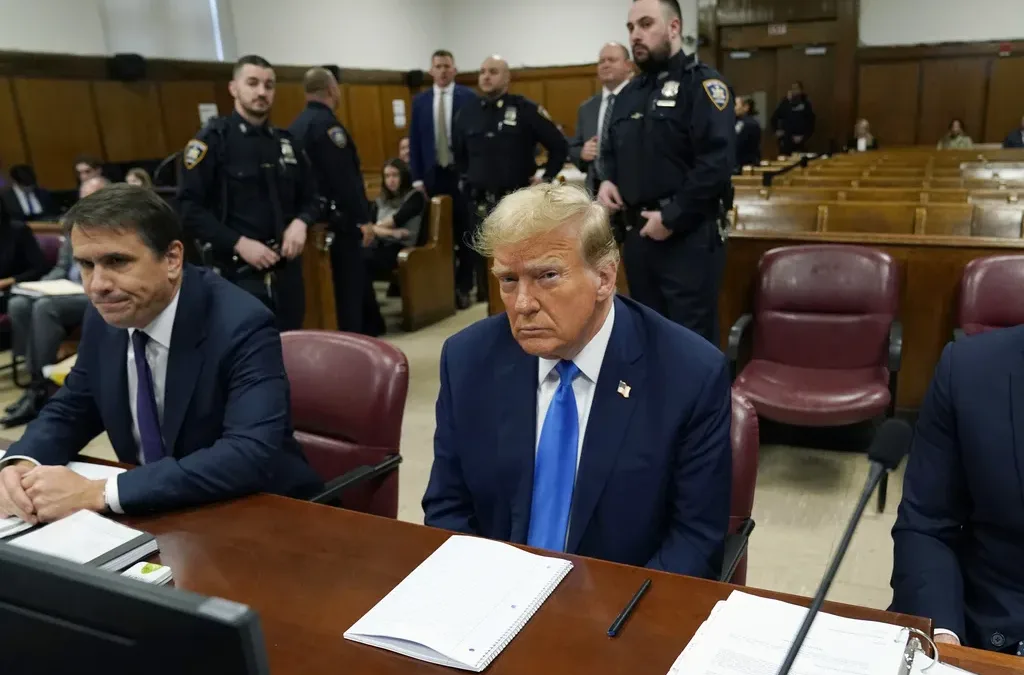
Photo courtesy: Arizona Supreme Court Facebook page
The number of justices on the Supreme Court hasn’t changed since 1869.
The prospect that President Donald Trump and Senate Republicans will fill Justice Ruth Bader Ginsburg’s Supreme Court seat before the year is out has ignited a call for major changes on the court, including expanding the number of justices.
Now all eyes are on whether President Donald Trump and the Republican-led Senate will work expeditiously to confirm and install and new Supreme Court justice in Ginsburg’s place.
This, despite several Republican senators saying in 2016 that if a Supreme Court justice seat became open during any election year, the next president should make the nomination.
But what if the Supreme Court expanded instead? It’s possible. In fact, Arizona did it when Gov. Doug Ducey signed legislation expanding the Arizona Supreme Court in 2016.
Taking Arizona’s Lead
At the time, Ducey said more judges would allow the state to take on more cases and ensure “swift justice,” as reported by The Arizona Republic.
Ducey went on to approve House Bill 2537 that cost the state of Arizona an additional $1 million a year. Ducey argued that expanding the court from five to seven judges would also offer “more voices” in the court.
In a letter defending the court’s expansion, Ducey argued that the additional justices would put Arizona on par with other states that have similar populations yet more Supreme Court justices.
Ducey also said in the letter, “Some, particularly national activists and media who aren’t familiar with our system here, have inaccurately described this as ‘court packing.’ That’s just wrong.”
Fast forward to 2019 and, as The Arizona Republic reports, the court does not operate much differently. In fact, although cases have, indeed, increased, the court has decided fewer cases than in years past.
Growing to Meet Demand
The US Supreme Court, on the other hand, has had a major increase in caseloads since the number of sitting justices was last increased. President Ulysses S. Grant increased the size of the Supreme Court from seven to nine justices in 1869. According to data from the Federal Judicial Center, just over 1,200 cases were on the Supreme Court docket in 1880. by 2015, that number had grown to more than 7,500.
Some Democratic senators, who had been averse to increasing the size of the nine-member court, said in the wake of Ginsburg’s death that the Republican rush to fill the high court vacancy could be a breaking point.
Massachusetts Sen. Ed Markey said on Twitter that if Republicans don’t allow the winner of the Nov. 3 presidential election to select the next justice, “we must abolish the filibuster and expand the Supreme Court.”
Biden, who ran a relatively centrist primary campaign and spent 36 years in the Senate, is concerned that such moves would worsen divisions during a particularly polarized moment in American history.
A Polarizing Option
Another worry is that changing the size of the court for the first time in 150 years would come back to bite the Democrats, leading to further expansion when Republicans next control both Congress and the White House. Faced with a 6-3 conservative court as the new year begins, Democrats would need to add four seats to overcome the Republicans’ edge. With a 15-justice court, just two more additions by the Republicans would solidify their advantage.
White House press secretary Kayleigh McEnany pushed back against Democratic talk of expanding the court, citing Ginsburg’s own words in a 2019 interview with NPR in which she said ”packing the court was a bad idea when President Franklin Delano Roosevelt tried it and I’m not in favor of all of that.”
Democrats said almost nothing about the Supreme Court at their convention in August. That changed in an instant over the weekend.
“Nothing is off the table” for Senate rules changes if Republicans quickly confirm a new justice, Senate Democratic leader Chuck Schumer of New York warned in conference call Saturday with Democratic senators, according to a person on the private call who was not authorized to discuss it publicly and spoke on condition of anonymity.
If Democrats win control of the Senate in the November elections, they probably would need to get rid of the filibuster, the Senate rule that requires 60 votes rather than a simple majority for most legislation, before they could move on legislative changes that might include the size of the court.
But several said in a conference call this weekend that they’d consider all options if they fail. “Nothing is off the table. The legitimacy of the court and our democracy is at stake,” said Vanita Gupta, president of the Leadership Conference on Civil and Human Rights.
Revisiting an Old Idea
It’s been more than 80 years since expanding the size of the court has received serious discussion. In 1937, Roosevelt tried and failed to add seats to a court on which aging conservative justices had struck down several New Deal programs. Roosevelt lost the fight in Congress over court expansion, though retirements soon eliminated FDR’s need for legislation.
One of the attractions of court expansion is that it does not require amending the Constitution, as imposing term limits on justices might.
The court’s size can be changed by legislation. The number of seats varied during its first 80 years from a low of six at the time the Constitution took effect in 1789 to a high of 10 during the Civil War. The current tally of nine justices was set in an 1869 law.
Congress might also act to impose term limits, but any change is likely to draw a legal challenge because the only limit set by the Constitution is that federal judges “shall hold their Offices during good Behaviour.” They can be impeached, but otherwise decide for themselves when to retire.
Supported by Progressives
Several progressive groups have been pushing structural court changes essentially since Trump took office and appointed Justice Neil Gorsuch to fill a vacancy created by Justice Antonin Scalia’s death in 2016. President Barack Obama nominated Judge Merrick Garland for the seat, but Senate Majority Leader Mitch McConnell refused to act on the nomination in the 2016 election year.
McConnell has said he will press to confirm Trump’s nominee to fill the latest election-year opening.
Expanding the court “is the only logical response to Republicans breaking their own precedent, stealing another seat and confirming someone at this late date in the calendar,” said Christopher Kang, co-founder and chief counsel of Demand Justice, a leading group urging Democrats to embrace changes to the court.
Political scientist Aaron Belkin, whose Take Back the Court group also favors court expansion, said the issue will only grow in prominence in the event of Democratic victories this fall if a Supreme Court dominated by conservatives were then to strike down civil rights and other legislation passed by a Democratic Congress and signed by Biden.
“The conversation about court expansion is not so much about the court but restoring democracy. This court is not going to allow a Biden administration to restore democracy,” Belkin said.
Associated Press writers Alexandra Jaffe, Deb Riechmann and Thomas Beaumont in Des Moines, Iowa, contributed to this report.
Politics

Trump says he’s pro-worker. His record says otherwise.
During his time on the campaign trail, Donald Trump has sought to refashion his record and image as being a pro-worker candidate—one that wants to...

VIDEO: Hundreds show up in Scottsdale to support reproductive rights
@coppercourier Days after the Arizona Supreme Court ruled to enforce a long-dormant law that bans nearly all abortions, hundreds took part in a...
Local News

US court rejects a request by tribes to block $10B energy transmission project in Arizona
In Arizona, work was halted briefly in November amid pleas by tribes to review environmental approvals for the San Pedro Valley. ALBUQUERQUE, N.M....

What to know about Trump’s legal issues
Over the past year, former president Donald Trump has become the center of not one, not two, not three, but four criminal investigations, at both...




